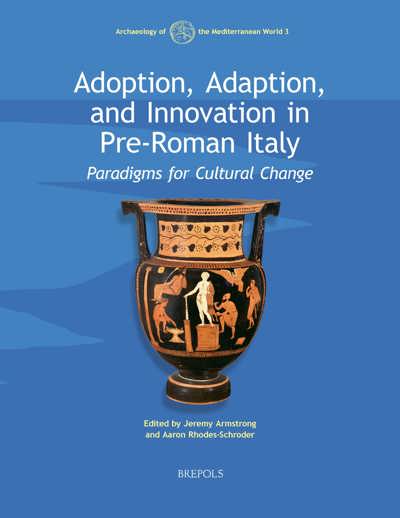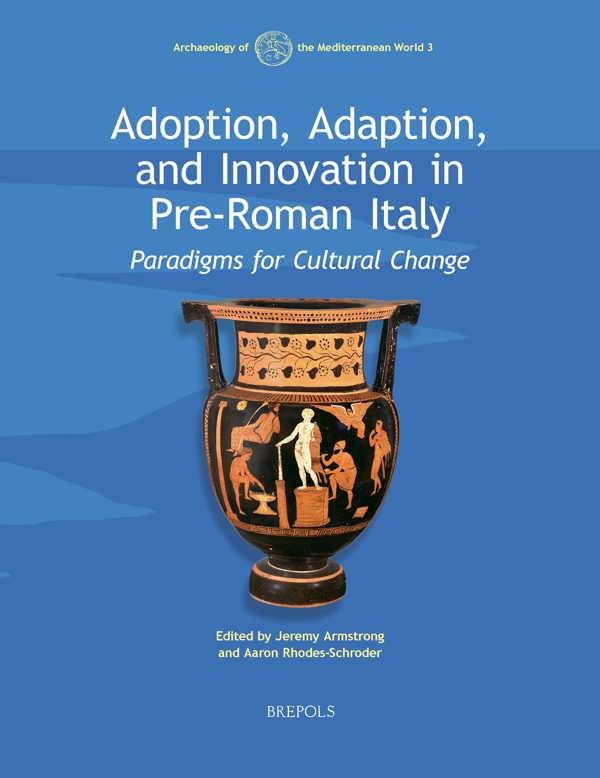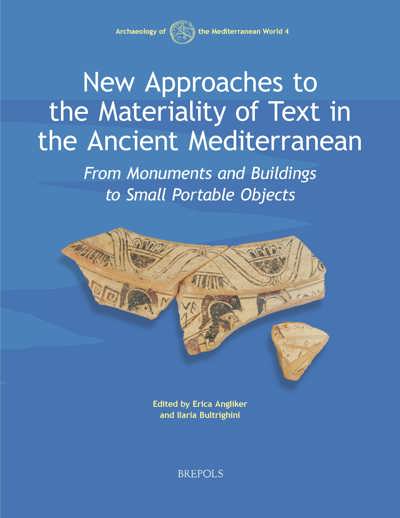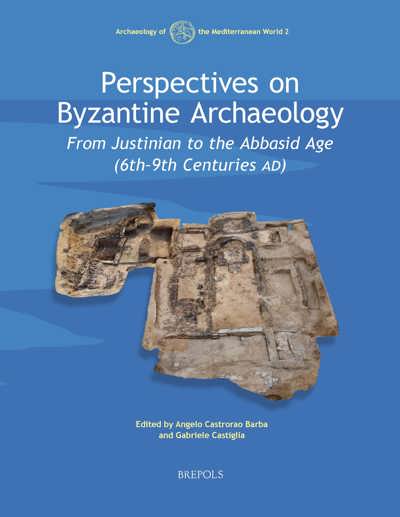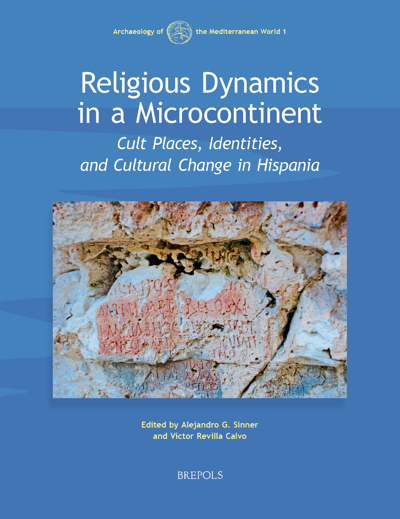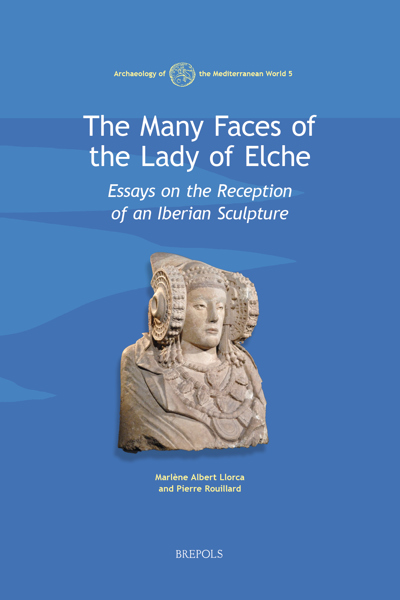
Adoption, Adaption, and Innovation in Pre-Roman Italy
Paradigms for Cultural Change
Jeremy Armstrong, Aaron Rhodes-Schroder (eds)
- Pages: 282 p.
- Size:216 x 280 mm
- Illustrations:60 b/w, 84 col., 8 tables b/w., 10 maps b/w, 5 maps color
- Language(s):English
- Publication Year:2023
- € 110,00 EXCL. VAT RETAIL PRICE
- ISBN: 978-2-503-60232-5
- Paperback
- Available
- € 110,00 EXCL. VAT RETAIL PRICE
- ISBN: 978-2-503-60233-2
- E-book
- Available
" Insgesamt ist das Buch eine sehr anregende Lektüre, die neue Perspektiven für die Forschung eröffnet. Alle Beiträge sind von hoher Qualität, und besonders die fächerübergreifende Verknüpfung von theoretischen Erklärungsmodellen mit archäologischen Befunden und naturwissenschaftlichen Analysen ist für übergeordnete Fragestellungen wie für die Paradigmen von kulturellen Veränderungen im antiken Italien sehr fruchtbar." (Joachim Weidig, in Sehepunkte, 24.5.2024)
“Wenn es eine starke Botschaft gibt, die von dieser Sammlung ausgeht, dann müsste sie lauten: „It’s complicated!“ Wir sollten vermeiden, einfache Etiketten und Klassifizierungen zu verwenden, und wir wären gut beraten, keine einseitige Dynamik in kulturellen und intellektuellen Entwicklungen zu postulieren. John North Hopkins’ Erörterung der Cista Ficoroni – eines Objekts des Elitenaustauschs, das der römisch noch pränestinisch, etruskisch oder griechisch, italisch oder lateinisch ist – ist eine elegante Illustration dieses Arbeitsprinzips. Jede Aufforderung, der Komplexität den ihr gebührenden Platz einzuräumen, ist zu begrüßen; der Hauptnutzen dieses Bandes liegt jedoch in der konzentrierten und sachkundigen Erörterung von neuem oder bisher nicht ausreichend genutztem Material.” (Federico Santangelo, in Historische Zeitschrift, 319, 2024, p. 148-149)
“(…) it is very worthwhile as it offers new approaches to move towards a comprehensive post-colonial research methodology. The Introduction is a must for anyone needing direction or trying to catch up on the topic and the case studies deliver excellent examples, especially on how to look at known material with new eyes.” (Marion Uckelmann, in Antiquity, 98/400, 2024, p. 1142-1143)
"Adoption, Adaption, and Innovation in Pre-Roman Italy is a fair contribution to a revised, contemporary understanding of pre-Roman Italian cultural change and borrowing." (Nicholas J. Odom, in Ceræ, 11, 2024, p. 201)
Jeremy Armstrong is Associate Professor of Ancient History at the University of Auckland and is the author/editor of seven volumes, and numerous chapters and articles, on archaic Rome and Italy.
Aaron Rhodes-Schroder graduated with his PhD from the University of Auckland specializing in the cross-cultural transmission of ideas and artistic forms in Etruria.
The ancient Mediterranean basin was once thought to be populated by large, monolithic, cultural-political entities. In this conception, ‘the Greeks’, ‘the Romans’, and other stable and homogenous cultures interacted and vied for supremacy like early modern states or empires. Today, however, thanks largely to an ever-increasing archaeological record, critical and sensitive approaches to the literary evidence, and the impact and application of new theoretical approaches, the ancient Mediterranean region is instead argued to be full of dynamic microcultures organized in a fluid set of overlapping networks. While this atomization of culture has resulted in more interesting and accurate micro-histories, it has also challenged how we understand cultural interaction and change.
This volume draws on this new understanding of cultural identity and contact to address the themes of adoption, adaption, and innovation in Pre-Roman Italy from the 9th–3rd centuries BCE. The contributors to this volume build upon recent paradigm shifts in research that challenge traditional Hellenocentric models and work to establish a new set of frameworks for approaching the tangled question of how ‘indigenous’ and ’foreign’ features relate to one another in the material record. Using focused case-studies, ranging from the role played by mobile populations in transferring ideas and technologies to the different ways in which ‘foreign’ artistic elements were used by Italian peoples, the volume explores what the — now commonly accepted — connectedness of a wider Mediterranean world meant for the people of Italy in practical terms, and offers new models for how concepts and ideas were transmitted, reinterpreted, repurposed, and re-appropriated in early Italy to fit within their local context.
List of Illustrations
Acknowledgements
Abbreviations
1. Rethinking Cultural (Ex)Change in Pre-Roman Italy
Jeremy Armstrong and Aaron Rhodes-Schroder
2. The Paradox of Innovation in Conservative Societies: Cultural Self-Consistency and Bricolage in Iron Age Central Italy
Nicola Terrenato
3. Mixing Up Mediterranean Innovation: The Case of Viticulture and Wine
Franco De Angelis
4. The World has Changed: Insularity and Tyrrhenian Connectivity during the Corsican Iron Ages
Marine Lechenault and Kewin Peche-Quilichini
5. Folding Meaning in an Object: The Ficoroni Cista and the Heterarchy of Art in Early Italy
John North Hopkins
6. Virtue in Variety: Contrasting Temple Design in Etruscan Italy
Charlotte R. Potts
7. The Demon Is in the Detail: Greek Pottery in Etruscan Funerary Contexts
Aaron Rhodes-Schroder
8. Local Choices in a Networked World: Funerary Practices at Crustumerium (Lazio) during the Long Seventh Century BCE
Peter Attema, Barbara Belelli Marchesini, and Matthijs Catsman
9. From the Ground Up: Constructing Monumental Buildings in Archaic Central Italy
Amanda K. Pavlick
10. The Archaic Countryside Revisited: A Ceramic Approach to the Study of Archaic Rural Infill in Latium Vetus
Gijs Tol
11. Ritual Connectivity in Adriatic Italy
Camilla Norman
12. Face to Face: Isolated Heads in South Italian and Etruscan Visual Culture
Keely Elizabeth Heuer
13. Feasting Transformed: Commensal Identity Expression and Social Transformation in Iron Age and Archaic Western Sicily
William M. Balco
14. The Deep Past of Magna Graecia’s Pottery Traditions: Adoption and Adaptation at Timpone della Motta and in the Sibaritide (Northern Calabria, Italy) between the Middle Bronze Age and the Archaic Period
Peter Attema, Carmelo Colelli, Martin Guggisberg, Francesca Ippolito, Jan Kindberg Jacobsen, Gloria Mittica, Wieke de Neef, and Sine Grove Saxkjær
Index
